The history of North America is a complex narrative shaped by diverse cultures, significant events, and transformative changes over thousands of years. From the ancient civilizations of Indigenous peoples to European colonization, the emergence of the United States and Canada, and the dynamic relationships between nations, North America’s history is rich and varied. This article explores key periods and events that have defined the continent’s past.
Indigenous Peoples and Early Civilizations
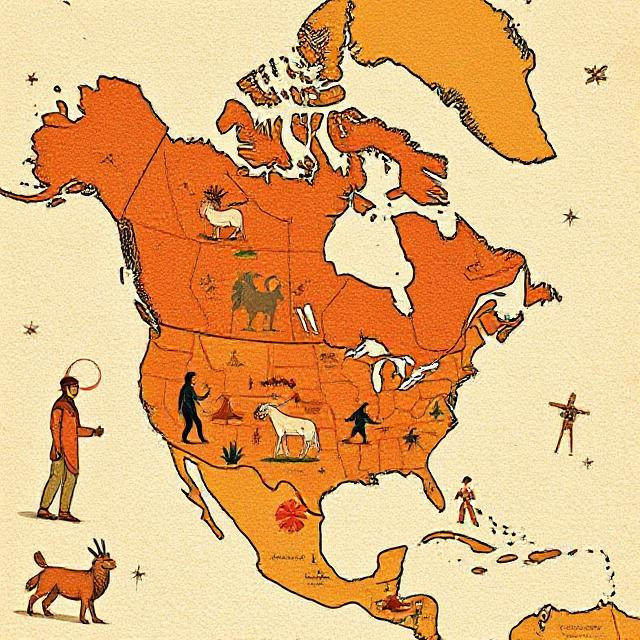
Pre-Columbian Era
Long before European arrival, North America was home to a multitude of Indigenous cultures and civilizations. Archaeological evidence suggests that humans first inhabited the continent over 15,000 years ago, migrating across the Bering Land Bridge from Asia. These early inhabitants spread across the continent, developing diverse societies adapted to their environments.
Major Civilizations
Several advanced civilizations emerged in North America, including:
The Mississippian Culture: Flourishing from around 800 CE to 1600 CE, this culture was known for its large earthen mounds, such as Cahokia, near present-day St. Louis. Cahokia was a major urban center with a population of tens of thousands, engaged in trade and complex social structures. The society was characterized by its agricultural practices, particularly the cultivation of maize, which supported its large population.
The Ancestral Puebloans (Anasazi): Located in the Four Corners region (where Utah, Colorado, Arizona, and New Mexico meet), this civilization is famous for its cliff dwellings and intricate pottery. They thrived from 100 CE to 1300 CE, developing advanced agricultural techniques, including the use of irrigation to support their farming in arid conditions.
The Iroquois Confederacy: Formed in the 15th century, this alliance of six Native American nations (Mohawk, Oneida, Onondaga, Cayuga, Seneca, and later the Tuscarora) played a significant role in the political landscape of northeastern North America. Their democratic governance system influenced later American political thought and exemplified sophisticated political organization among Indigenous peoples.
Cultural Diversity
Indigenous peoples across North America exhibited remarkable cultural diversity, with distinct languages, traditions, and lifestyles. From the nomadic Plains tribes who followed buffalo herds to the settled agricultural communities in the Southwest, these societies developed rich spiritual beliefs and intricate social structures. The cultural practices of Indigenous peoples included storytelling, art, and ceremonies that reflected their deep connection to the land.
European Exploration and Colonization (15th – 17th Century)
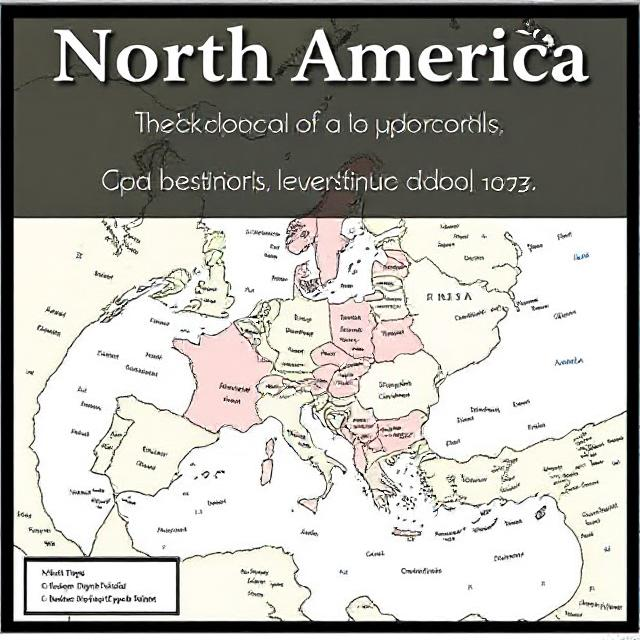
Age of Exploration
The late 15th century marked the beginning of European exploration in North America. Driven by the quest for new trade routes and resources, explorers from Spain, France, England, and the Netherlands ventured into the New World.
Spanish Conquistadors
In 1492, Christopher Columbus’s voyage, sponsored by Spain, led to the first contact between Europeans and the Americas. Following Columbus, Spanish conquistadors like Hernán Cortés and Francisco Pizarro explored and conquered vast territories in Central and South America. The Spanish established settlements in the Caribbean and parts of Florida and the Southwest, often imposing their culture on Indigenous peoples and exploiting their labor. The Spanish missions aimed to convert Indigenous peoples to Christianity, significantly impacting their cultures and societies.
French and English Exploration
The French, led by explorers like Jacques Cartier and Samuel de Champlain, focused on trade, particularly in furs. They established relationships with various Indigenous nations, leading to the founding of Quebec in 1608. The French engaged in fur trading with Indigenous tribes, forming alliances that would shape the economic landscape of North America.
The English, seeking to expand their empire, established the Jamestown colony in Virginia in 1607, marking the beginning of permanent English settlement in North America. The early years of Jamestown were fraught with challenges, including conflicts with Indigenous peoples and harsh living conditions, but the colony eventually thrived, particularly with the introduction of tobacco cultivation.
Impact on Indigenous Peoples
European colonization had devastating effects on Indigenous populations. Diseases brought by Europeans, such as smallpox, decimated Indigenous communities, who had no immunity. Additionally, land dispossession and violent conflicts arose as settlers encroached on Indigenous territories, leading to significant cultural and societal disruptions. The introduction of European goods, such as firearms and metal tools, altered Indigenous ways of life, often leading to increased competition and conflict among tribes.
Colonial America (17th – 18th Century)
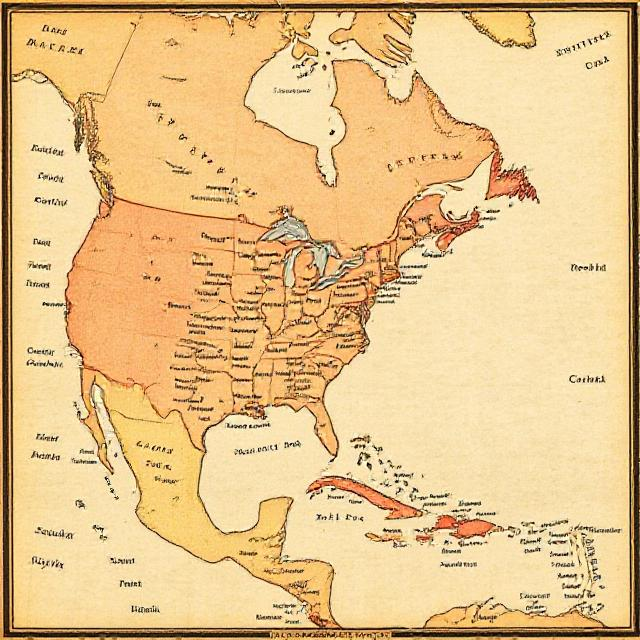
Growth of the Thirteen Colonies
By the mid-18th century, the English had established 13 colonies along the Atlantic coast. Each colony developed its unique identity, influenced by geography, economy, and the origins of its settlers.
Economic Foundations
The colonies’ economies varied significantly:
New England Colonies: Focused on fishing, shipbuilding, and trade, these colonies developed a mixed economy supported by small-scale farming. The harsh climate and rocky soil limited agricultural production, leading to a reliance on maritime industries.
Middle Colonies: Known as the “breadbasket,” these colonies produced grains and had a diverse population, including Dutch, German, and Swedish settlers. The fertile land supported extensive agriculture, and cities like Philadelphia became major trade centers.
Southern Colonies: The economy relied heavily on agriculture, particularly tobacco, rice, and indigo, cultivated on large plantations using enslaved labor. The plantation system created a distinct social hierarchy, with wealthy landowners at the top and enslaved Africans at the bottom.
Road to Independence
As the colonies grew, tensions with Britain increased. The French and Indian War (1754-1763) strained British finances, leading to increased taxation on the colonies through measures like the Stamp Act and the Townshend Acts. Colonial resistance culminated in events like the Boston Tea Party (1773) and the First Continental Congress (1774), setting the stage for revolution.
The ideological underpinnings of the revolution were influenced by Enlightenment thinkers, who emphasized individual rights and the social contract. Pamphlets like Thomas Paine’s “Common Sense” galvanized public opinion in favor of independence.
The American Revolution (1775-1783)
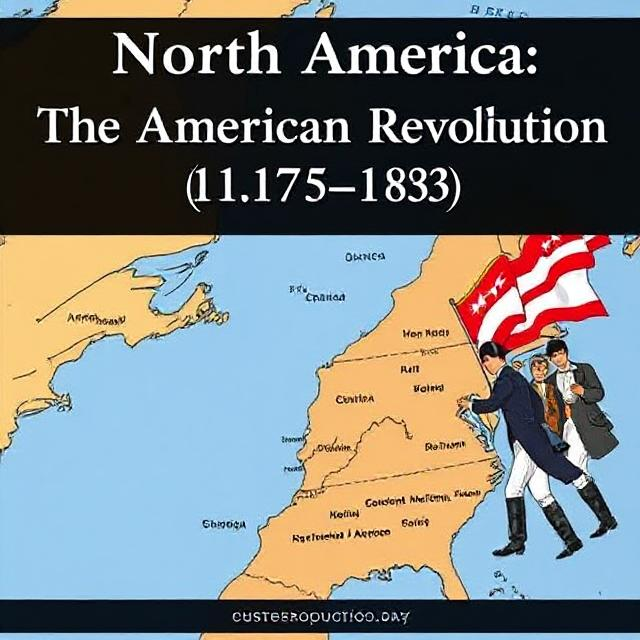
Declaration of Independence
In 1776, the Continental Congress adopted the Declaration of Independence, authored by Thomas Jefferson, asserting the colonies’ right to self-governance. This document articulated Enlightenment ideals of liberty and equality, rallying support for independence. It emphasized the belief that governments derive their power from the consent of the governed and that individuals have the right to overthrow oppressive regimes.
Revolutionary War
The American Revolutionary War began in 1775, pitting the colonies against British forces. Key battles included the Battles of Lexington and Concord, Bunker Hill, and Saratoga. The war was characterized by a lack of resources and training for the Continental Army, but strategic alliances, particularly with France, provided crucial support. The French alliance, formalized in 1778, provided military assistance, supplies, and naval support.
The war culminated in the British surrender at Yorktown in 1781, leading to the Treaty of Paris in 1783, which recognized American independence. The war had significant social implications, including the questioning of traditional hierarchies and the role of women and enslaved individuals in society.
Formation of the United States (1783-1815)
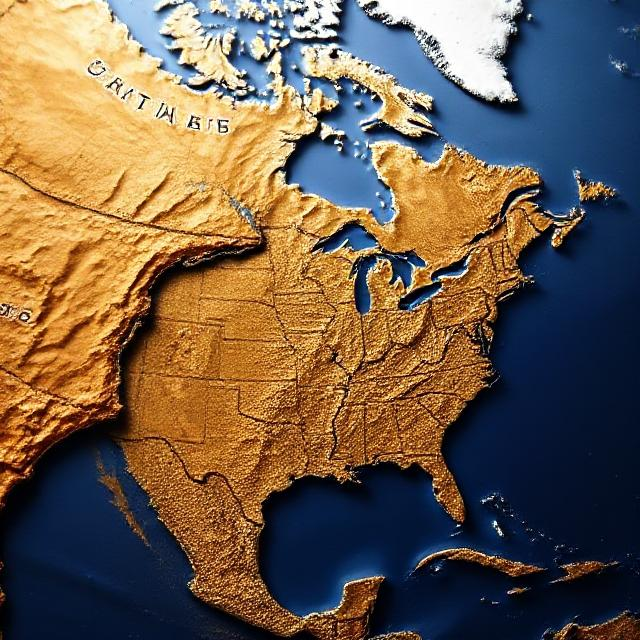
The Articles of Confederation
Following independence, the newly formed United States faced significant challenges. The Articles of Confederation, adopted in 1781, established a weak central government that struggled to address economic and political issues. The inability to raise revenue or maintain order led to calls for reform, as states acted independently, often to the detriment of national unity.
The Constitution
In 1787, delegates convened in Philadelphia to draft the U.S. Constitution, creating a stronger federal government with checks and balances. Ratified in 1788, the Constitution established the framework for American governance and included the Bill of Rights, safeguarding individual liberties. The Constitution’s principles of separation of powers and federalism laid the groundwork for the U.S. political system.
Expansion and Conflict
The early 19th century saw westward expansion fueled by the belief in Manifest Destiny—the idea that Americans were destined to expand across the continent. This expansion often came at the expense of Indigenous peoples, leading to violent conflicts and forced removals, such as the Trail of Tears in the 1830s. The discovery of gold in California in 1848 further accelerated westward migration, leading to increased tensions over land and resources.
The Civil War and Reconstruction (1861-1877)
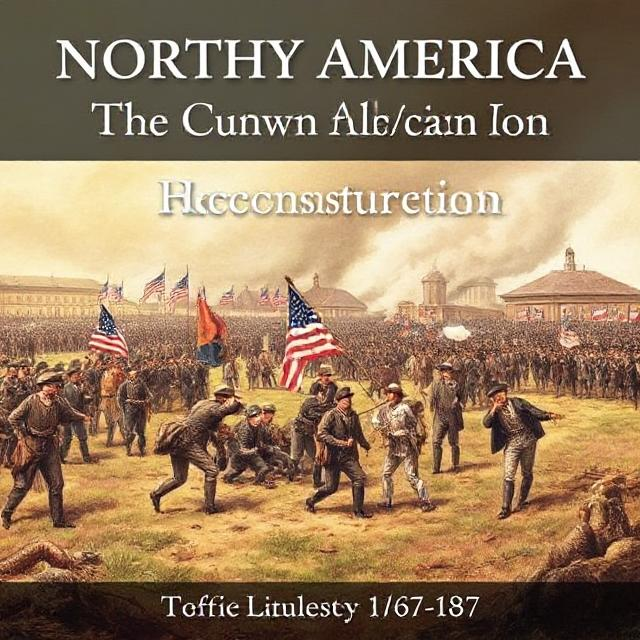
Causes of the Civil War
By the mid-19th century, sectional tensions between the North and South escalated over issues such as slavery, states’ rights, and economic differences. The Southern economy relied heavily on agriculture and enslaved labor, while the North was becoming more industrialized and urbanized. The election of Abraham Lincoln in 1860 prompted Southern states to secede from the Union, forming the Confederate States of America.
The Civil War
The Civil War (1861-1865) was a brutal conflict, resulting in significant loss of life and destruction. Key battles included Gettysburg, Antietam, and Vicksburg. The war ended with the surrender of Confederate General Robert E. Lee at Appomattox Court House in 1865. The conflict raised profound questions about national identity, citizenship, and the future of slavery in America.
Reconstruction Era
The Reconstruction era aimed to rebuild the South and integrate formerly enslaved individuals into society. The 13th, 14th, and 15th Amendments abolished slavery, granted citizenship, and protected voting rights for African Americans. However, resistance from Southern whites and the rise of groups like the Ku Klux Klan undermined these efforts, leading to the establishment of Jim Crow laws and segregation. The Reconstruction policies were met with significant backlash, and by the late 1870s, many of the gains made during this period were rolled back.
Industrialization and the Gilded Age (1877-1900)

Economic Transformation
The late 19th century marked a period of rapid industrialization in the United States. Advances in technology, transportation, and communication transformed the economy. The rise of factories, railroads, and urban centers fueled economic growth and attracted millions of immigrants seeking opportunities. Innovations such as the telegraph and telephone revolutionized communication, while the expansion of the railroad network facilitated trade and migration.
Labor Movements
As industrialization progressed, workers faced harsh conditions and low wages. Labor movements emerged, advocating for workers’ rights and better working conditions. Notable events included the Haymarket Affair (1886) and the Pullman Strike (1894), highlighting the growing tensions between labor and management. The rise of labor unions, such as the American Federation of Labor (AFL), sought to improve wages, hours, and working conditions for industrial workers.
The Progressive Era and World Wars (1900-1945)

Progressive Reforms
The early 20th century saw the rise of the Progressive Movement, aimed at addressing social, political, and economic issues. Reformers sought to curb corporate power, improve labor conditions, and expand suffrage. Key achievements included the 19th Amendment, granting women the right to vote in 1920. Progressive reforms also included antitrust legislation, child labor laws, and initiatives to improve public health and education.
World War I
The U.S. initially maintained a stance of neutrality during World War I but eventually entered the conflict in 1917, contributing to the Allied victory. The war had significant social and economic impacts, including the Great Migration of African Americans to northern cities for factory jobs. The war also led to increased government involvement in the economy and the promotion of war-related industries.
The Great Depression
The stock market crash of 1929 triggered the Great Depression, leading to widespread unemployment and economic hardship. President Franklin D. Roosevelt’s New Deal programs aimed to provide relief, recovery, and reform, reshaping the role of government in American life. The New Deal included initiatives such as Social Security, unemployment insurance, and infrastructure projects, which aimed to stimulate the economy and provide jobs.
World War II
The U.S. entered World War II after the attack on Pearl Harbor in 1941. The war effort mobilized the economy, leading to job creation and technological advancements. Women entered the workforce in unprecedented numbers, symbolized by “Rosie the Riveter.” The U.S. emerged as a global superpower following the war, playing a crucial role in establishing international institutions like the United Nations and shaping post-war geopolitics.
The Cold War Era (1947-1991)
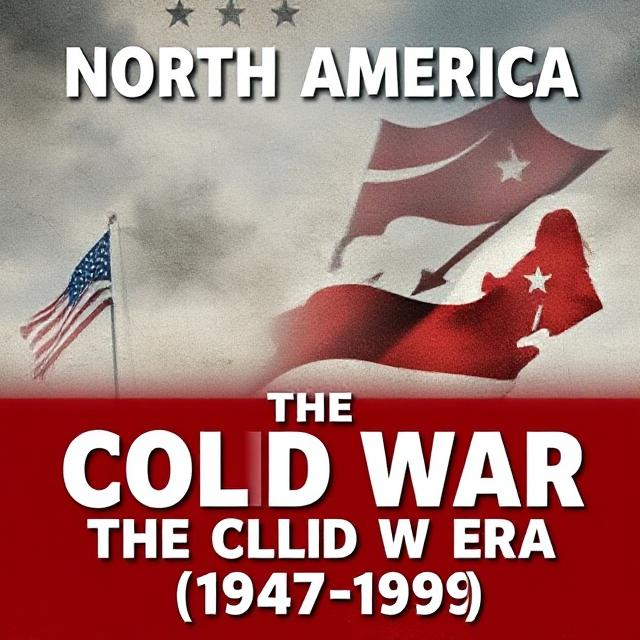
Post-War Tensions
The end of World War II marked the beginning of the Cold War, a period of geopolitical tension between the United States and the Soviet Union. The U.S. adopted a policy of containment to prevent the spread of communism, leading to involvement in conflicts such as the Korean War (1950-1953) and the Vietnam War (1955-1975). The arms race and the threat of nuclear war defined this era, leading to significant military spending and the establishment of NATO.
Civil Rights Movement
The 1950s and 1960s witnessed the rise of the Civil Rights Movement, advocating for racial equality and justice. Leaders like Martin Luther King Jr. and Malcolm X emerged, challenging segregation and discrimination. The movement achieved significant milestones, including the Civil Rights Act of 1964 and the Voting Rights Act of 1965, which aimed to dismantle institutional racism and ensure equal rights for African Americans.
Contemporary North America (1991-Present)
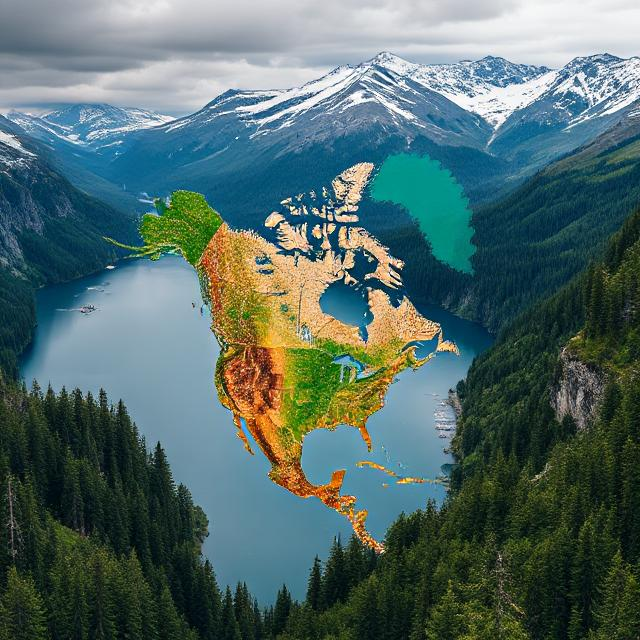
Post-Cold War Changes
The collapse of the Soviet Union in 1991 marked the end of the Cold War. The U.S. emerged as the world’s sole superpower, influencing global politics and economics. The 1990s saw technological advancements, economic growth, and increased globalization. The rise of the internet transformed communication and commerce, leading to a new era of connectivity.
September 11 Attacks and the War on Terror
The terrorist attacks on September 11, 2001, profoundly impacted U.S. foreign and domestic policy. The subsequent War on Terror led to military interventions in Afghanistan and Iraq, raising questions about national security, civil liberties, and foreign relations. The U.S. government’s response included the establishment of the Department of Homeland Security and the implementation of surveillance measures, which sparked debates over privacy and civil rights.
Social Movements and Challenges
The 21st century has seen the emergence of various social movements, including the LGBTQ+ rights movement, Black Lives Matter, and environmental activism. These movements have sought to address issues of inequality, justice, and climate change, reflecting the ongoing struggles for civil rights and social justice in North America.
Current Issues and Future Directions
Contemporary North America faces numerous challenges, including immigration policy, economic inequality, climate change, and political polarization. The COVID-19 pandemic further highlighted existing disparities in healthcare and economic security. As North America navigates these issues, the importance of understanding its complex history remains vital for shaping a more inclusive and equitable future.
Conclusion
The history of North America is a story of hope, resilience, and transformation. From the early civilizations of Indigenous peoples to the establishment of modern nations, each chapter reflects the continent’s diverse cultural heritage and the ongoing struggle for justice and equality. Understanding this history is essential for fostering a more inclusive society and addressing the challenges that lie ahead.


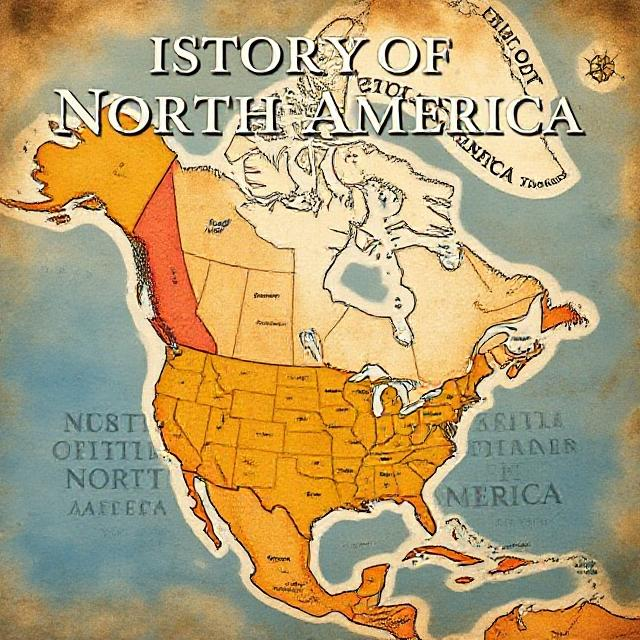
1 thought on “History of North America”